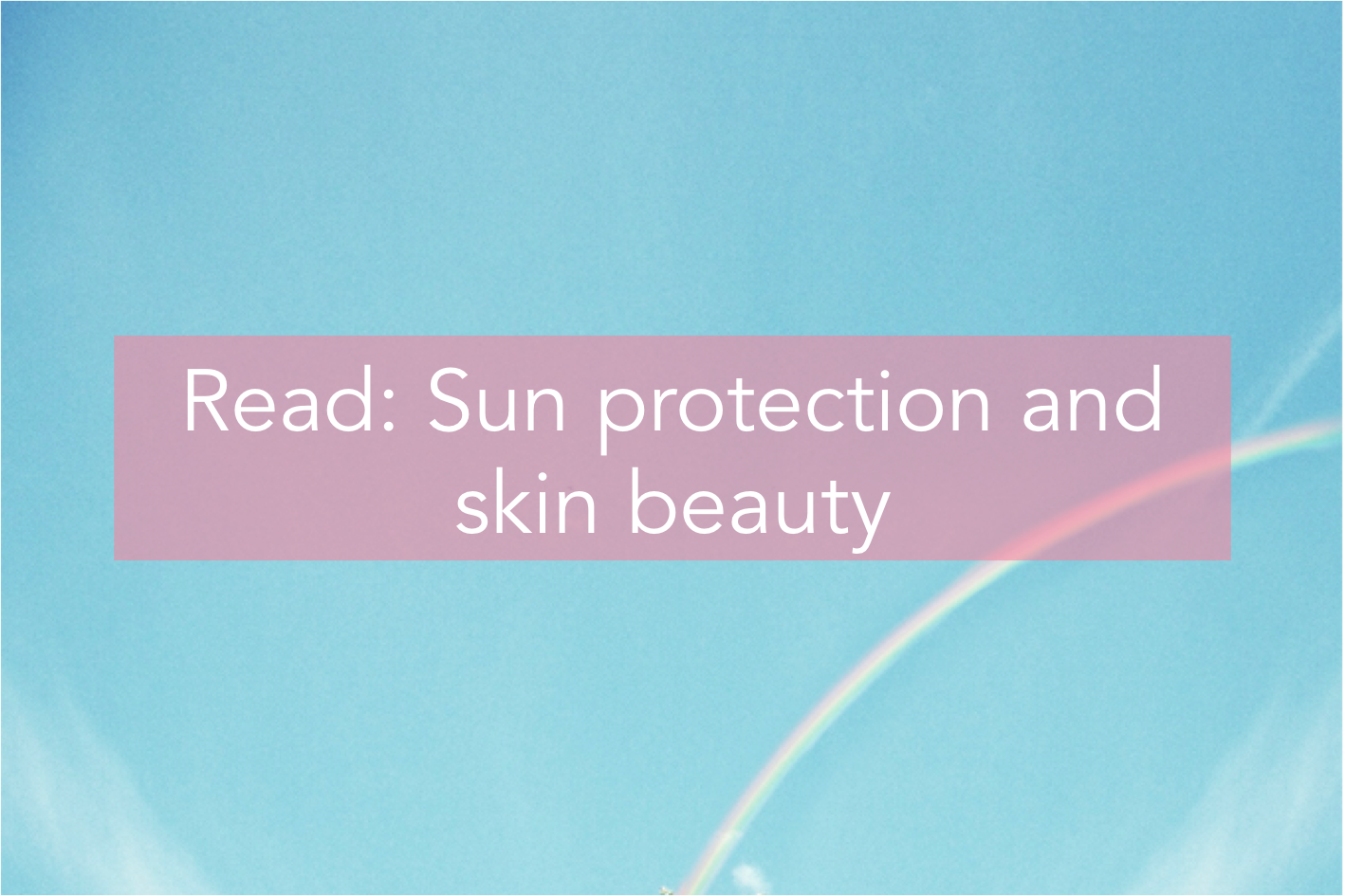Sun and skin
The sun is beneficial for our body. It is a morale booster, allows the synthesis of vitamin D needed to fix calcium on bones, and even temporarily improves certain skin diseases. However, excessive exposure to the sun is bad for health, with a risk of premature skin ageing and the appearance of cancer.
The different types of solar radiation1
The sun is the main source of this radiation. Without the Earth’s atmosphere (ozone layer), this electromagnetic radiation would be lethal to humans. However, three types of radiation reach the surface of the skin:
• UVA rays are those that mostly reach the Earth’s surface. They are able to penetrate deep into the skin and are responsible for accelerated skin aging in the event of excessive exposure.
• UVB rays reach the Earth’s surface in a minority and are the main cause of sunburn. They are more at risk of causing cancer.
• Infrared (IR) radiation is the main cause of photoaging.
When exposed to the sun, the skin will absorb the UV and IR radiation emitted. This radiation will then cause different damage depending on its nature.
Effects of solar radiation on the skin
Phototypes and tanning
Tanning is a defense reaction of the skin against the sun. Melanin, the pigment that colors the skin, has a protective role against UV rays. It serves as a physical barrier that disperses UV rays and as an absorbent filter that limits UV penetration into the epidermis.
Depending on the nature of the skin, not all individuals are equal in the sun. The skin’s sensitivity to UV rays has made it possible to define 6 types of phototypes: from the lightest phototype I that does not tan, to phototype VI for black skin. The more naturally pigmented a skin is or has the ability to tan quickly, the less sensitive it will be to UV and sunburn. However, the highest phenotypes are just as likely to develop skin cancers or photoaging over time.
Sunburn
The sunburn appears during a prolonged exposure to the sun or not in the lightest phototypes not tanning. It may appear within minutes without sun protection. Sunburn is related to inflammation of the skin caused by UVB rays. As with a burn, the skin becomes red and painful, and redness can persist for several days.
Photoaging and accelerated aging
Exposure to the sun causes irradiation of the skin by UVA and IR rays whatever the phenotype. These rays penetrate deep into the skin up to the dermis and will create oxidative stress responsible for indirect DNA mutations, but also for the degradation of the collagen and elastin network that support the skin. These phenomena cause the skin to sag and are responsible for photoaging. We speak of accelerated aging when photoaging is added to normal aging and thus accelerates the appearance of its visible skin signs.
Photoaging skin is characterized by the formation of deep wrinkles, a non-uniform complexion (presence of pigment spots), loss of skin elasticity and poor barrier function.
Cancers
UVA and UVB cause photochemical changes in the genetic material (DNA) of skin cells. Although cells effectively repair most of this damage, if solar exposure is too high, DNA changes can become permanent. If these changes affect skin regulatory mechanisms, a cancerous process can begin. Each year, 60,000 new skin cancers are detected, 2/3 of which are related to excessive exposure to the sun.
It is also very important to remember that artificial UV rays from tanning booths are just as harmful as UV rays from the sun. Under no circumstances do they prepare the skin for the sun. To preserve the skin’s youth and health, good sun protection is therefore important.




